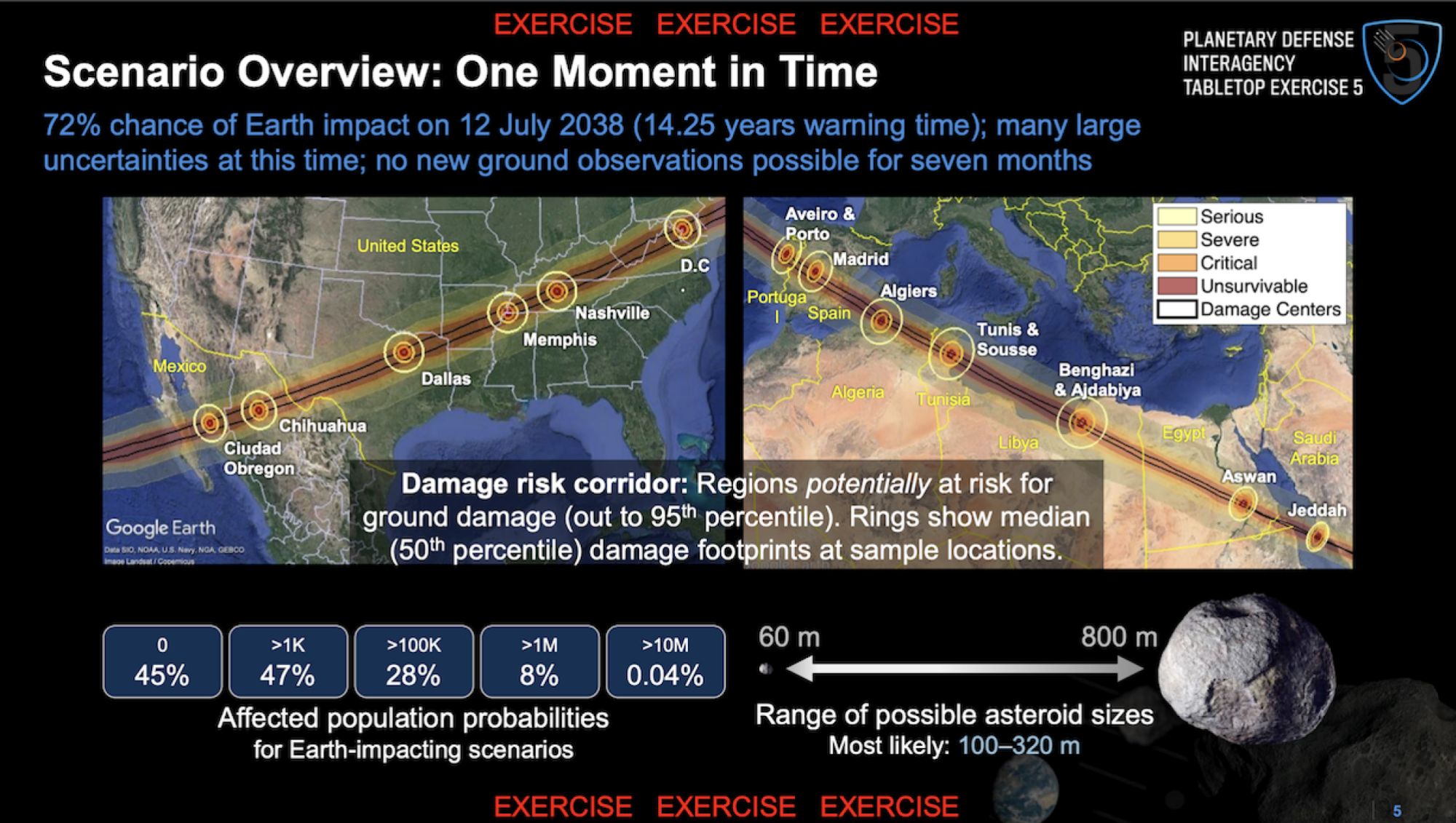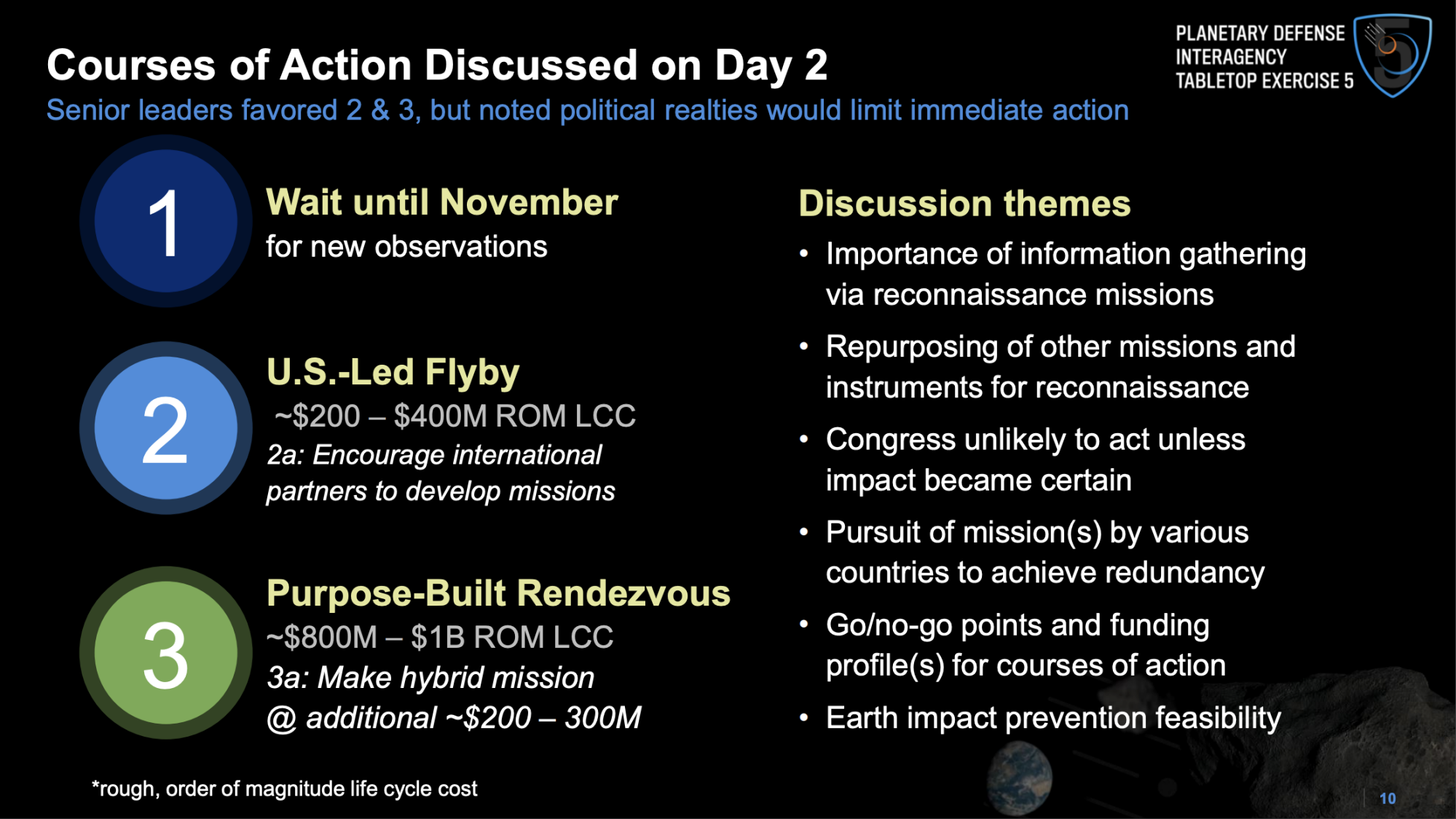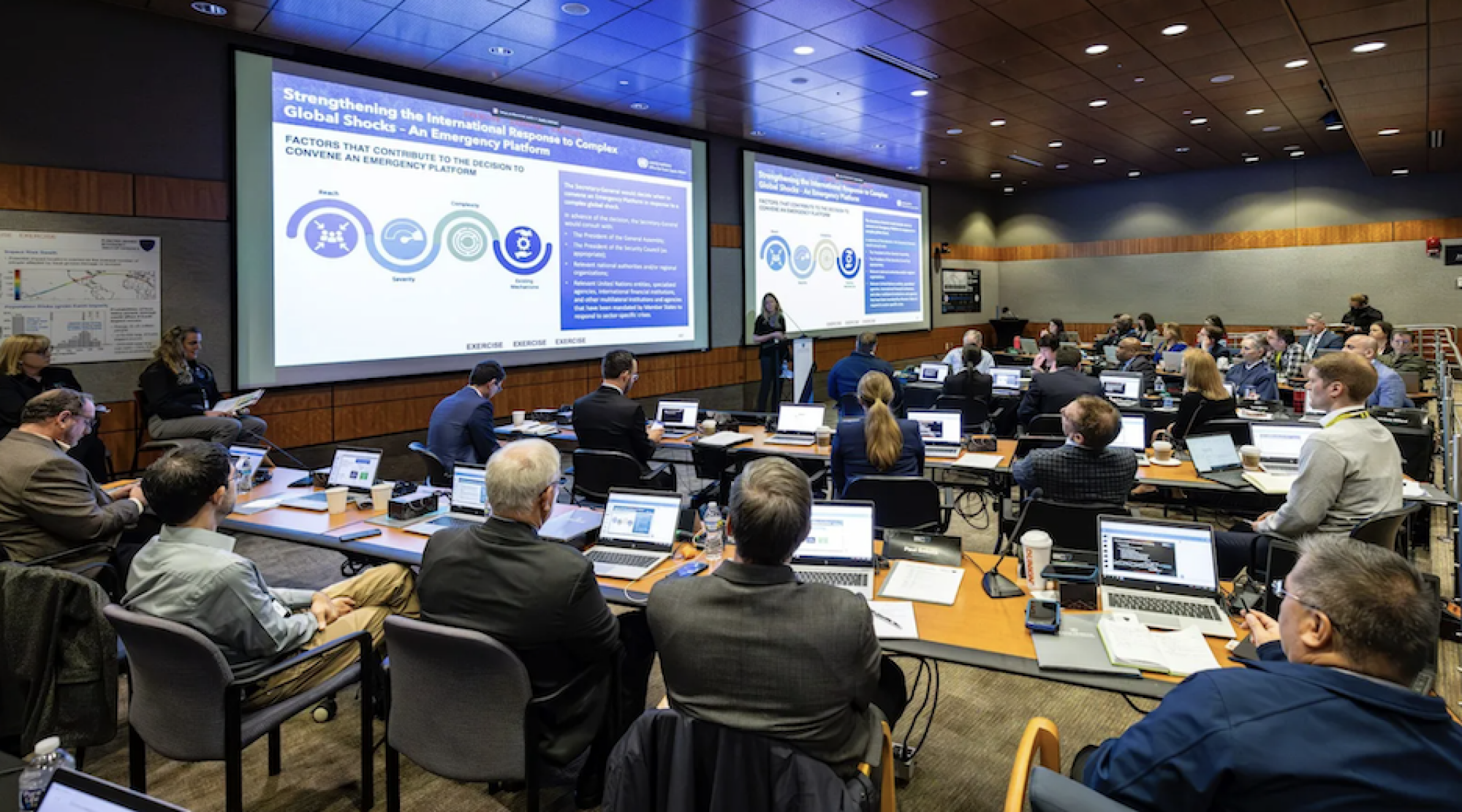What if, in 14 years, a newly discovered asteroid could hit Earth?
But that’s not all. This menacing space rock, with a diameter of 330 to 1,050 feet (100 to 320 meters), has just disappeared behind the sun, making crucial observations impossible for the next seven months.
To prepare for such a troubling situation scenario, NASA just completed an exercise aimed at “informing and assessing our ability as a nation to effectively respond to the threat of a potentially dangerous asteroid or comet.” A possible collision of asteroids or comets can pose a number of uncertainties, which the space agency continued to test during the recent Fifth Interagency Planetary Defense Tabletop Exercise.
“A major asteroid impact is potentially the only natural disaster that humanity has the technology to predict years in advance and take action to prevent,” said Lindley Johnson, planetary defense officer emeritus. from NASA, in a press release.
A NASA scientist has viewed the first images from Voyager. What he saw gave him chills.
It’s important to note that no known asteroid is on a collision course with Earth for at least 100 years, and the chances of a major impact within our lifetime are extremely low, astronomers say. Planetary defense agencies have never needed to sound the alarm about a threatening impact – although you’ve undoubtedly seen sensational reports about threatening asteroids over the years.
“We never issued a warning,” Johnson previously told Mashable. (But they did educate the public about what some interesting asteroids are doing.)
“We never issued a warning.”
But at some point, an impact is inevitable. “Yes, asteroids have hit Earth throughout its history, and they will happen again,” notes NASA.
Crushable speed of light
In the latest asteroid collision scenario, the space agency presented a hypothetical object approximately 330 to 1,050 feet in diameter that has a 72 percent chance of hitting Earth. Something in this range, even if not the largest class of asteroid, could be extremely destructive. Take the 200 meter deep Meteor Crater, which landed in present-day Arizona 50,000 years ago. The culprit was probably between 100 and 170 feet in diameter, but it created an explosion large enough to destroy Kansas City.
As the hypothetical trajectory below shows, this asteroid passes over some densely populated areas like Dallas, which would almost certainly create a national emergency, although the exact trajectory is uncertain. The impact of the scenario is expected in 14 years, in July 2038, giving countries a relatively short time frame to prepare, including a seven-month monitoring interval. Based on initial observations, the size, composition and trajectory of the object are uncertain.
“To complicate this year’s hypothetical scenario, essential follow-up observations would have to be delayed by at least seven months – a critical loss of time – as the asteroid passed behind the Sun, as seen from Earth’s vantage point. in space,” the space agency said. said.

A hypothetical asteroid impact scenario created for the interagency planetary defense tabletop exercise.
Credit: NASA

A slide from the Interagency Planetary Defense Tabletop Exercise showing action plans to address a likely impact.
Credit: Planetary Defense Interagency Tabletop Exercise
This latest planetary defense exercise highlights how crucial monitoring of near-Earth objects (these are objects located approximately 30 million kilometers from Earth’s orbit around the sun) is. Fourteen years is a hasty deadline.
“You need to know what’s coming, when it’s coming, and how hard it’s going to hit,” Eric Christensen, director of the Catalina Sky Survey looking for NEOs in Arizona, previously told Mashable.
“You need to know what’s coming, when it’s coming and how hard it’s going to hit.”
Among the action plans discussed by NASA, FEMA and other partners was a flyby of the incoming object, which would significantly improve our understanding of its composition, rotation, speed and beyond. Will it break into smaller pieces in Earth’s atmosphere? Is it rubble-like or solid? How likely is it to hit the ocean? The major operation, a “Specially Designed Rendezvous”, which involves using a spacecraft to deflect an object, was also discussed.
Asteroid deflection is a realistic future possibility. In 2022, NASA plunged a refrigerator-sized spacecraft into a stadium-sized asteroid, hoping to simply poke he. It was an unprecedented successful test, proving that humanity could change the trajectory of a threatening asteroid, if it were ever headed our way. The impact cut asteroid Dimorphos’ loop around its parent asteroid (they travel around the sun in pairs, or binary systems) by 33 minutes and 15 seconds – when the original goal was to change it by at least least 73 seconds.

Participants in the fifth interagency planetary defense tabletop exercise.
Credit: NASA/JHU-APL/Ed Whitman
Ultimately, this latest tabletop impact exercise resulted in a number of “high-level takeaways.” A glaring problem is the uncertainties involved in planning for likely impact. Participants recommended developing “the capability to rapidly launch a near-Earth object reconnaissance mission,” which could include repurposing existing spacecraft.
Fortunately, NASA and its planetary defense partners will continue to exercise hypothetical threats against asteroids. It is our responsibility to be prepared, even if the overall risk is low.
The risks of an asteroid impact
Here are the current general risks from asteroids or comets, whether tiny or very large. (It’s important to note that even relatively small rocks remain threatening, as demonstrated by the surprise 17-meter rock that exploded over Russia and blew out people’s windows in 2013.
-
Every day, about 100 tons of dust and sand-sized particles fall into the Earth’s atmosphere and burn up quickly.
-
Every year, on average, an “asteroid the size of an automobile” crashes into our sky and explodes, explains NASA.
-
Impacts from objects approximately 460 feet in diameter occur every 10,000 to 20,000 years.
-
A “dinosaur-killing” impact from a rock with a diameter of about 800 meters or more occurs on timescales of 100 million years.